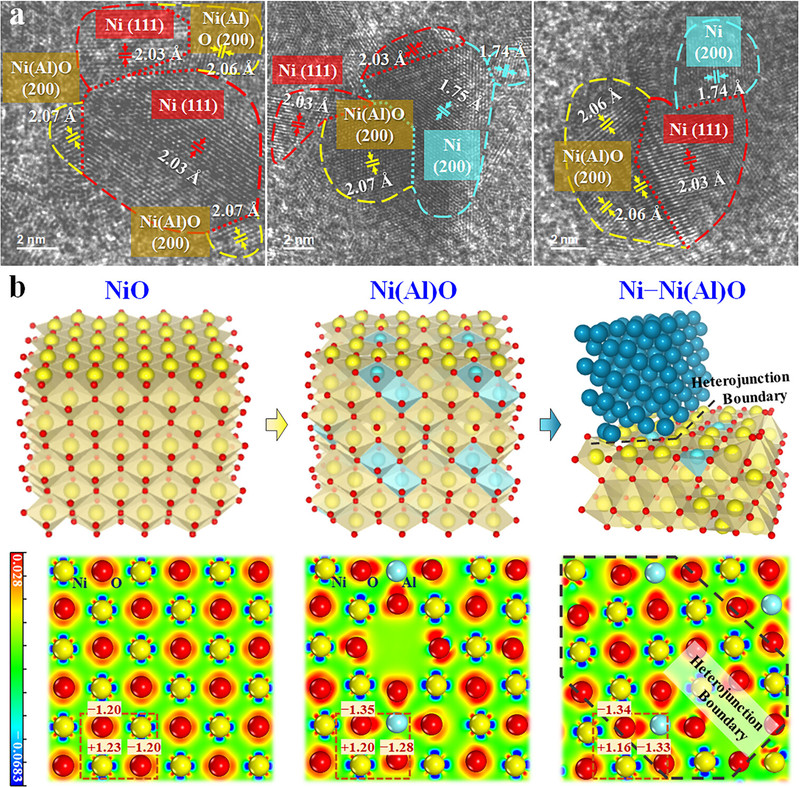Recently, Prof. He Jing from the School of Chemistry of the University, Prof. Duan Xuezhi from the School of Chemical Engineering of the East China University of Science and Technology, the National Key Laboratory of Chemical Engineering and Low Carbon Technology, and Distinguished Researcher Chen Wenyao innovatively put forward the strategy of "double series switch" Ni@CMO Heterojunction catalyst can realize the on-demand synthesis of primary, secondary and tertiary aromatic amines, and the yields are all over 96%. Relevant achievements were published on the title of "Tandem Switch Triggered On Demand Synthesis of Aromatic Amines in High Yields" in the German Journal of Applied Chemistry (Andrew. Chem. Int. Ed., DOI: 10.1002/anie.202424847).
Aromatic amine compounds are important intermediates in many fields, such as pharmaceuticals, dyes, pesticides, rubber additives and heterocyclic compounds, and play a key role in the pharmaceutical and chemical industries. However, the traditional synthesis methods of aromatic amines usually involve multi-step reactions, which have limitations such as low atom economy, insufficient yield, harsh reaction conditions, excessive by-products and environmental problems. In recent years, one pot tandem catalysis, as a new green synthesis method, can complete multiple reaction steps in a single reactor, avoiding the multi-step purification process in traditional synthesis. However, integrating multi-step reactions into one reactor faces challenges such as complex catalytic mechanism, competition of reaction paths, incompatibility of intermediates and excessive by-products. Especially when designing catalysts with three or more different active sites, there may be mutual inhibition between these active sites. Therefore, how to overcome these challenges and achieve efficient tandem catalytic synthesis is still an urgent problem.

This research innovatively proposed a series catalytic strategy of "double switch coordinated regulation". By introducing a kinetic switch and a thermodynamic switch, the site incompatibility and component incompatibility problems common in multi-step series reactions were systematically solved. The kinetic switch precisely regulates the metal metal and metal oxygen boundary microenvironment through the phosphotungstic acid functionalized Ni – Ni (Al) O heterojunction catalyst, and cooperatively accelerates the rate determining steps of nitrobenzene hydrogenation, N-alkylation and aza Michael addition reactions; The thermodynamic switch is based on the competitive adsorption of ethanol, hydrogen and acrylonitrile to gradually minimize the change of free energy and ensure the smooth progress of the reaction cascade. This strategy not only realizes the in-situ switching reaction path, but also realizes the on-demand accurate synthesis of monobasic, binary and ternary aromatic amines (the yields are all over 96%). At the same time, it conceptually breaks the dependence of traditional tandem catalysis on the separation and protection of catalytic sites.

In addition, the research developed Ni@CMO The catalyst system constructs rich Ni – Ni (Al) O heterojunction boundaries through in situ topological transformation, and forms controllable metal/non-metal and acid/base site synergistic systems combined with phosphotungstic acid regulation, with high activity and high selectivity. Combined with in-depth mesoscopic kinetics research (including isotope tracing, kinetic analysis and DFT calculation), the rate control steps and key active site characteristics of each sub reaction were defined for the first time, and the structure-activity relationship between the electronic structure of the catalytic interface and the catalytic performance was established. This system significantly simplifies the traditional production process of aromatic amines, significantly reduces energy and material consumption, shows obvious advantages in process sustainability and economy, and provides a new design concept and technical path for green and efficient synthesis of aromatic amines.
The first authors of this paper are Chen Zhou and Sang Keng, doctoral students of the School of Chemical Engineering of East China University of Science and Technology, Ye Lei, postdoctoral fellow, and Zhang Jian, associate professor of Beijing University of Chemical Technology. The above research was carefully guided by Academician Yuan Weikang, Academician Chen De and Professor Zhou Xinggui. In addition, the research has also been supported by the National Key Research and Development Program, the National Natural Science Foundation, the Shanghai Carbon Neutral Basic Research Special Zone Project, the Natural Science Major Project of the Scientific Research Innovation Program of the Shanghai Municipal Education Commission, the Science and Technology Innovation Action Plan of the Shanghai Municipal Science and Technology Commission and other projects.
Original link: https://onlinelibrary.wiley.com/doi/abs/10.1002/anie.202424847
